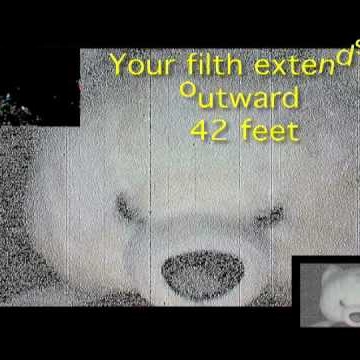Thomas A Mcgill
age ~48
from Tampa, FL
- Also known as:
-
- Thomas A Gill
- Alexander T Mcgill
Thomas Mcgill Phones & Addresses
- Tampa, FL
- Jacksonville, FL
- Oak Harbor, WA
- Stanton, CA
- Hohenwald, TN
- Lemoore, CA
- Cleveland, OH
Work
-
Company:Wells fargo bank, n.aAug 2012
-
Position:Branch manager ii
Education
-
School / High School:University of South Florida- Tampa, FL1998
-
Specialities:Bachelor of Arts in History
Ranks
-
Licence:California - Active
-
Date:1991
Lawyers & Attorneys

Thomas John McGill, Orange CA - Lawyer
view sourceAddress:
2561 N Crossgate St, Orange, CA 92867
(909)9744907 (Office)
(909)9744907 (Office)
Licenses:
California - Active 1991
Education:
Harvard University
Us Patents
-
Method Of Manufacture Of A Suspended Nitride Membrane And A Microperistaltic Pump Using The Same
view source -
US Patent:6579068, Jun 17, 2003
-
Filed:Aug 7, 2001
-
Appl. No.:09/923483
-
Inventors:Paul M. Bridger - Pasadena CA
Robert P. Strittmatter - Pasadena CA
Robert A. Beach - Pasadena CA
Thomas C. McGill - Pasadena CA -
Assignee:California Institute of Technology - Pasadena CA
-
International Classification:F04B 1924
-
US Classification:417 53, 4174132, 4174131, 417322
-
Abstract:A suspended p-GaN membrane is formed using photochemical etching which membrane can then be used in a variety of MEMS devices. In the illustrated embodiment a pump is comprised of the p-GaN membrane suspended between two opposing, parallel n-GaN support pillars, which are anchored to a rigid substrate below the pillars. The p-GaN membrane bows upward between the pillars in order to relieve stress built up during the epitaxial growth of membrane. This bowing substantially increases the volume of the enclosed micro-channel defined between membrane and substrate below. The ends of membrane are finished off by a gradual transition to the flat underlying n-GaN layer in which fluidic channels may also be defined to provide inlet and outlet channels to microchannel. A traveling wave or sequential voltage applied to the electrodes causes the membrane to deform and provide a peristaltic pumping action in the microchannel.
-
Semiconductor Nitride Pressure Microsensor And Method Of Making And Using The Same
view source -
US Patent:6647796, Nov 18, 2003
-
Filed:Aug 7, 2001
-
Appl. No.:09/923628
-
Inventors:Robert A. Beach - Altadena CA
Robert P. Strittmatter - Pasadena CA
Thomas C. McGill - Pasadena CA -
Assignee:California Institue of Technology - Pasadena CA
-
International Classification:G01L 900
-
US Classification:73754, 73720, 73726, 257254
-
Abstract:An integrated microsensor includes a bowed micromachined membrane coupled to a substrate to define a microcavity therebetween. An integrated strain sensor is coupled to the micromachined membrane to generate a signal responsive to (deformation of the membrane and hence responsive to the pressure of the fluid in the microcavity. A frame is coupled to the peripheral edge of the membrane to assist in enlarging the microcavity. The membrane is composed of a nitride of B, Al, Ga, In, Tl or combinations thereof, or more particularly of p-type GaN where the frame is comprised of n-type GaN. The membrane and frame are fabricated using a photoelectrochemical etching technique. The fabrication of the integrated strain sensor creates stresses across the membrane. The strain sensor comprises an integrated circuit strain-FET. The strain-FET comprises an AlGaN/GaN heterostructure having an AlGaN/GaN interface where deformation of the membrane is coupled as strain to the AlGaN/GaN piezoelectric interface.
-
Integrated Micropump Analysis Chip And Method Of Making The Same
view source -
US Patent:7189358, Mar 13, 2007
-
Filed:Aug 7, 2001
-
Appl. No.:09/923582
-
Inventors:Robert A. Beach - Altadena CA, US
Robert P. Strittmatter - Pasadena CA, US
Thomas C. McGill - Pasadena CA, US -
Assignee:California Institute of Technology - Pasadena CA
-
International Classification:G01N 15/06
G01N 33/00
G01N 33/48
H01L 21/302
E03B 1/00 -
US Classification:422 681, 422 50, 422 61, 422 63, 422100, 422 81, 422 8205, 422103, 422104, 436 43, 436174, 73 101, 73 102, 73 116, 73 169, 73 171, 438689, 137 1, 137255, 417 1
-
Abstract:An integrated micropump or a plurality of integrated micropumps are communicated to a plurality of analysis chambers. A plurality of integrated analysis chambers include integrated analysis devices to test a fluid for an analyte. The micropumps continuously or periodically pump the fluid into the analysis chambers and flush the analysis chambers after analysis of the analyte. In one embodiment, the analysis device comprises an integrated LED and an integrated optical detector. The LED and detector are tuned to an optical absorption line of the analyte. The micropumps are composed of nitrides of B, Al, Ga, In, Tl or combinations thereof and fabricated using photoelectrochemical techniques. The analysis chambers, and micropumps including the analysis devices are simultaneously fabricated during which fabrication of the micropumps and the analysis devices are masked from the photoelectrochemical techniques.
-
Proximity Lithography Device
view source -
US Patent:6078055, Jun 20, 2000
-
Filed:Mar 18, 1998
-
Appl. No.:9/044082
-
Inventors:Paul M. Bridger - Pasadena CA
Thomas C. McGill - Pasadena CA -
Assignee:California Institute of Technology - Pasadena CA
-
International Classification:H01J 37304
-
US Classification:2504922
-
Abstract:A proximity lithography device using a modified electric field. In the preferred embodiment, the modified electric field is formed by illuminating a tip of a scanning probe in close proximity of the resist surface with a laser. In an alternate embodiment, the modified electric field is formed by positioning a tip of a scanning probe within close proximity of the resist surface, where illumination from a laser is in total internal reflection within the resist. The proximity of the tip to the resist surface creates a tunneling effect and forms the modified electric field. The modified electric field alters the resist for lithographic patterning.
-
Method For Fabricating Transistorless, Multistable Current-Mode Memory Cells And Memory Arrays
view source -
US Patent:60157380, Jan 18, 2000
-
Filed:Nov 17, 1997
-
Appl. No.:8/972118
-
Inventors:Harold J. Levy - Seal Beach CA
Thomas C. McGill - Pasadena CA -
Assignee:California Institute of Technology - Pasadena CA
-
International Classification:H01L 218246
-
US Classification:438275
-
Abstract:A transistorless memory cell for storing information as one of two possible bistable current states comprises (i) at least one first transistorless device exhibiting N-type negative differential resistance, including a high-impedance region, a low-impedance region and a negative-resistance region and having a polarity and (ii) at least one second transistorless device exhibiting an exponential or linear current-voltage characteristic and coupled to the first transistorless device. The read/write operation of the transistorless memory cell is performed in a current mode. A method for fabricating a self-aligned, three-dimensional structure of memory cells comprises the steps of (i) forming a first conducting layer, (ii) forming a first semiconductor layer above the first conducting layer, (iii) forming a second semiconductor layer above the first semiconductor layer, (iv) patterning the second semiconductor layer, (v) etching the second semiconductor layer, the first semiconductor layer and the first conducting layer, (vi) forming a second conducting layer above the second semiconductor layer, (vii) patterning and etching the second conducting layer, and (viii) etching the second semiconductor layer using the second conducting layer as a mask to form multiple semiconducting devices of a second kind, and etching the first semiconductor layer using the second conducting layer as a mask to form multiple semiconducting devices of a first kind.
-
Proximity Lithography Device
view source -
US Patent:62884042, Sep 11, 2001
-
Filed:May 26, 2000
-
Appl. No.:9/579450
-
Inventors:Paul M. Bridger - Pasadena CA
Thomas C. McGill - Pasadena CA -
Assignee:California Institute of Technology - Pasadena CA
-
International Classification:H01J 37304
-
US Classification:2504922
-
Abstract:A proximity lithography device using a modified electric field. In the preferred embodiment, the modified electric field is formed by illuminating a tip of a scanning probe in close proximity of the resist surface with a laser. In an alternate embodiment, the modified electric field is formed by positioning a tip of a scanning probe within close proximity of the resist surface, where illumination from a laser is in total internal reflection within the resist. The proximity of the tip to the resist surface creates a tunneling effect and forms the modified electric field. The modified electric field alters the resist for lithographic patterning.
-
Quantum-Effect Semiconductor Devices
view source -
US Patent:51132311, May 12, 1992
-
Filed:Sep 7, 1989
-
Appl. No.:7/404148
-
Inventors:Jan R. Soderstrom - Pasadena CA
Thomas C. McGill - Pasadena CA -
Assignee:California Institute of Technology - Pasadena CA
-
International Classification:H01L 29205
-
US Classification:357 16
-
Abstract:A novel combination of semiconductor heterojunctions provide a quantum-effect device with resonant or enhanced transmission of electrons (or holes) due to tunneling into a quantum well state in the valence (or conduction) band. A particular heterostructure comprising sequentially grown layers of indium arsenide, aluminum antimonide, gallium antimonide, aluminum antimonide and indium arsenide, permits electrons tunneling from the indium arsenide conduction band through the aluminum antimonide barrier into a sub-band level in the valence band quantum well of the gallium antimonide. This particular embodiment produced a current-voltage characteristic with negative differential resistance and a peak-to-valley current ratio of about 20 at room temperature and 88 at liquid nitrogen temperature. The present invention can be used either as a two-contact device such as a diode or a three-contact device such as a transistor.
-
Near Real-Time Extraction Of Deposition And Pre-Deposition Characteristics From Rotating Substrates And Control Of A Deposition Apparatus In Near Real-Time
view source -
US Patent:57727589, Jun 30, 1998
-
Filed:Feb 15, 1996
-
Appl. No.:8/602144
-
Inventors:Douglas A. Collins - Pasadena CA
Thomas C. McGill - Pasadena CA
George O. Papa - Pasadena CA -
Assignee:California Institute of Technology - Pasadena CA
-
International Classification:C30B 2516
-
US Classification:117 85
-
Abstract:Methods and apparatus are provided for monitoring deposition and pre-deposition characteristics such as the growth rates, oxide desorption, surface reconstruction, anion surface exchange reaction and smoothness of the surface of rotating substrates in near real-time during molecular beam epitaxy by processing the data in the time domain and for controlling a deposition apparatus in near real-time. An apparatus for extracting the characteristics and controlling the deposition apparatus in near real-time includes the following: (a) the deposition apparatus having a rotating substrate, (b) an energy pattern generator for subjecting the substrate to a beam of energy and for producing energy patterns, (c) an imaging unit for obtaining video images of the energy patterns, video images each having pixels, (d) a data processing unit for monitoring a selected set of the pixels on each of the video images, generating time-domain data for each video image and generating deposition parameters in near real-time, and (e) a deposition control unit for controlling the deposition apparatus in response to receiving the deposition parameters in near real-time. The method of extracting the characteristics and controlling the deposition apparatus in near real-time includes the following steps: obtaining video images of energy patterns coming from the substrate, monitoring a selected set of the pixels on each video image to generate time-domain data, filtering the time-domain data in near real-time, and controlling the deposition apparatus in near real-time.
Name / Title
Company / Classification
Phones & Addresses
Owner
Sol Irlandes Mexican Grill
Restaurants
Restaurants
2301 Performance Dr, Ste 100, Richardson, TX 75082
(972)6722062
(972)6722062
NUNUR, LLC
THE CROSSINGS AT INDIAN SPRINGS, LLC
TOWNE CENTRE SQUARE PARTNERS, LLC
SPINNINGWHEEL PARTNERS, LLC
MCGILL, KELLY AND ASSOCIATES, LLC
6025 MONT, LLC
TRU-GREEN PROPERTIES, LLC
Isbn (Books And Publications)

License Records
Thomas Michael Mcgill
License #:
ERS14439 - Active
Category:
Emergency Medical Services
Issued Date:
Feb 9, 2011
Expiration Date:
Dec 31, 2018
Type:
ERS - Endotracheal Intubation
Thomas Michael Mcgill
License #:
EMT14439 - Active
Category:
Emergency Medical Services
Issued Date:
Dec 7, 2010
Expiration Date:
Dec 31, 2018
Type:
EMT - Cardiac
Resumes

Thomas Mcgill
view sourceLocation:
United States

Thomas Mcgill
view sourceLocation:
United States

Thomas Mcgill Largo, FL
view sourceWork:
WELLS FARGO BANK, N.A
Aug 2012 to 2000
Branch Manager II BG, Inc
Largo, FL
Jan 2011 to Aug 2012
GENERAL MANAGER/CFO Fidelity National Information Systems
Jul 2010 to Mar 2011
Risk Manager Fidelity National Information Systems
Nov 2003 to Jul 2010
Senior Risk Analyst
Aug 2012 to 2000
Branch Manager II BG, Inc
Largo, FL
Jan 2011 to Aug 2012
GENERAL MANAGER/CFO Fidelity National Information Systems
Jul 2010 to Mar 2011
Risk Manager Fidelity National Information Systems
Nov 2003 to Jul 2010
Senior Risk Analyst
Education:
University of South Florida
Tampa, FL
1998
Bachelor of Arts in History Bergen Community College
Paramus, NJ
1990
Associate of Science in Business Administration
Tampa, FL
1998
Bachelor of Arts in History Bergen Community College
Paramus, NJ
1990
Associate of Science in Business Administration

Thomas McGill
view source
Mcgill Thomas
view source
Thomas William Mcgill
view source
Thomas McGill
view source
Shaun Thomas McGill
view source
Thomas Mcgill
view source
Brenda Thomas McGill
view source
Thomas J Mcgill
view sourceClassmates

Thomas McGill
view sourceSchools:
St. Nicholas of Tolentine School Chicago IL 1971-1979
Community:
Carol Leganski, Marlon Hall, Erik Novack

Thomas McGill III
view sourceSchools:
Gelnhausen American Elementary School Gelnhausen SC 1982-1986
Community:
Angela Osborne, Kim Jewell, Kelly Larsen, Jerry Gerald, Bill Adler

Thomas McGill
view sourceSchools:
St. Joseph's Prep School Philadelphia PA 1950-1954
Community:
Aedan Hurley, Robert Mcguigan, Mark Ehasz, Joseph Mikus

Thomas McGill
view sourceSchools:
Normangee High School Normangee TX 1955-1959
Community:
Brenda Hoogterp

Thomas McGill
view sourceSchools:
Larkspur Corte Madera School Larkspur CA 1953-1961
Community:
Clementine Clem, Margaret Estrada, Wayne Cole

Thomas McGill
view sourceSchools:
Dover Sherborn Regional High School Dover MA 1977-1981
Community:
Bob Johnson, Maureen Reilly, David Donovan

Thomas McGill
view sourceSchools:
Applewood Elementary School Brunswick OH 1973-1974, St. Ambrose School Brunswick OH 1974-1981
Community:
Paul Apostle, Joseph Gill, Robert King

Thomas McGill
view sourceSchools:
Astoria Intermediate School 126 Long Island City NY 1982-1986
Community:
Maritza Martell, Sammy Pereira, Maria Brenta, Sandra Koch, Peter Maroosis
Flickr
Googleplus

Thomas Mcgill
Relationship:
Single
Bragging Rights:
Im sexy

Thomas Mcgill
About:
This will be my 'professional' profile.

Thomas Mcgill

Thomas Mcgill

Thomas Mcgill

Thomas Mcgill

Thomas Mcgill

Thomas Mcgill
Youtube
Myspace
Get Report for Thomas A Mcgill from Tampa, FL, age ~48















